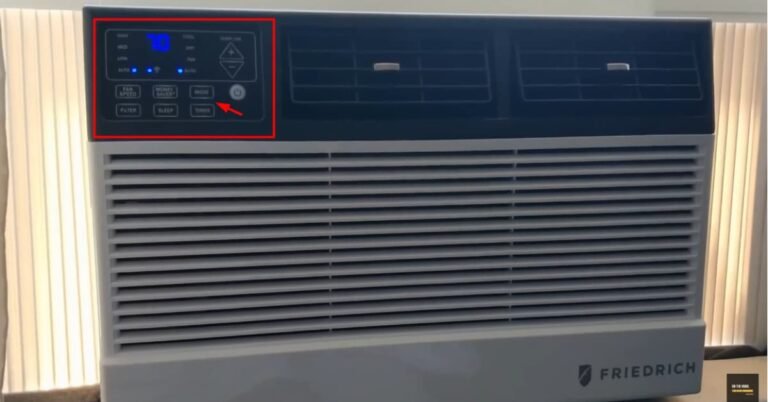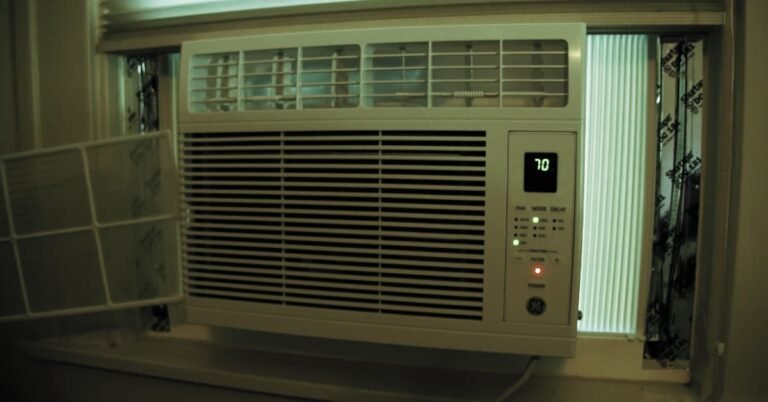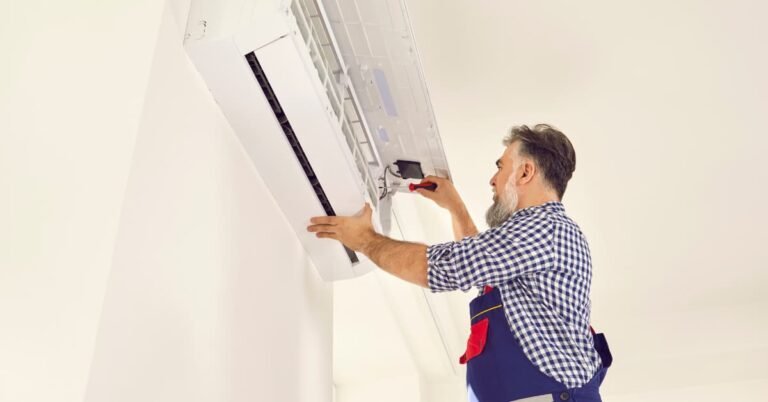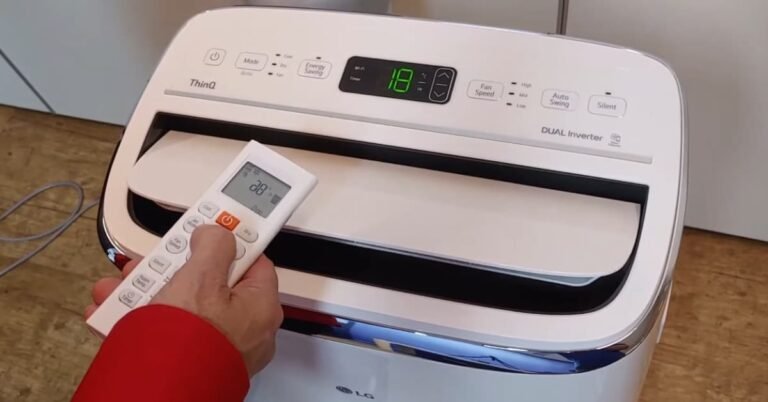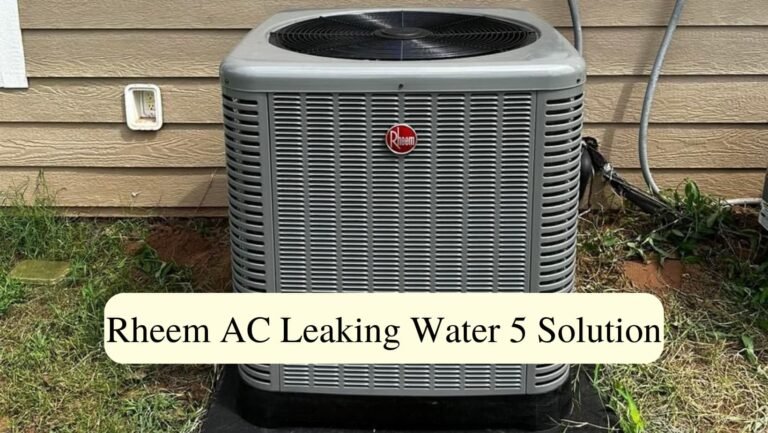Why My Air Conditioner Not Turning Off? 7 Solution
Having trouble with your air conditioner not turning off? This issue can not only be frustrating but also lead to higher energy bills and potential system damage.
To resolve this issue effectively, it’s crucial to identify the root cause among various possible reasons.
In this article, we’ll explore factors that may be causing your air conditioner to run continuously.

Reasons For Air Conditioner Not Turning Off
There are a few common explanations for why your air conditioner may not be turning off, including:
- Thermostat Malfunction
- Refrigerant Leak
- Dirty Air Filter
- Refrigerant Problems
- Insufficient Insulation
- Blocked or Closed Vents
- Electrical Issues
Once you have identified the possible causes of your air conditioner’s continuous operation, it’s time to take action and resolve the issue.
1. Thermostat Issues
One potential cause of this problem is thermostat issues. Understanding the reasons behind it can help you resolve the issue efficiently.
Step by step guide:
1. Check the thermostat settings: Ensure the thermostat is set to the “cool” mode and the desired temperature is appropriately selected.
2. Calibrate the thermostat: If the thermostat is not accurately displaying the temperature, consider recalibrating it according to the manufacturer’s instructions.
3. Replace the thermostat batteries: Low battery power can cause erratic behavior, so replace them if necessary.
4. Reset the thermostat: Try resetting the thermostat to its default settings, which may help resolve any internal glitches.
2. Incorrect Thermostat Setting
When your air conditioner persists in running, it might be due to incorrect thermostat settings. Knowing the potential causes behind this problem is key to resolving it effectively.
Step by step guide:
1. Verify the mode and temperature: Ensure the thermostat is set to the proper cooling mode and that the desired temperature is appropriately selected.
2. Double-check the programming: If your thermostat has programming options, review the settings to ensure there are no errors or conflicting schedules.
3. Adjust the temperature differentials: Some thermostats have temperature differential settings that control when the AC cycles on and off. Verify these settings are suitable for your comfort needs.
4. Reset the thermostat: Try resetting the thermostat to its default settings to eliminate any programming issues.
5. Seek professional assistance: If the problem persists or you have trouble with the thermostat’s programming, contacting an HVAC specialist is recommended for further diagnosis and resolution.

3. Dirty or Clogged Air Filters
When your air conditioner runs continuously, dirty or clogged air filters can be a possible cause.
Explore the factors that contribute to this issue in order to resolve it effectively.
Step by step guide:
1. Locate the air filters: Usually, air filters are located behind the return air grill or in the air handler unit. Refer to your AC unit’s manual if you’re unsure.
2. Switch off the system: To avoid any potential damage or injury, turn off the power supply to the air conditioner before proceeding.
3. Remove the air filters: Gently remove the air filters from their housing, being cautious not to damage them.
4. Clean or replace the filters: If the filters are reusable, clean them using a vacuum cleaner or by rinsing them with warm water and mild detergent. For disposable filters, replace them with new ones.
5. Reinstall the filters: Ensure the filters are placed back correctly, following the manufacturer’s instructions. Make sure they fit securely and are positioned in the correct direction.
6. Restore the power supply: Turn the power back on and test the air conditioner to check if it now turns off properly.
7. Regular maintenance: To prevent future issues, establish a regular air filter cleaning or replacement schedule according to the manufacturer’s recommendations.
4. Refrigerant Problems
Issues with the refrigerant can also cause your air conditioner to continuously run. Understanding these problems can help you address them effectively.
Step by step guide
1. Safety first: Prioritize your safety by turning off the air conditioner and disconnecting the power supply.
2. Check for refrigerant leaks: Inspect the refrigerant lines for any signs of leaks, such as oily residue or hissing sounds. If leaks are present, contact a professional HVAC technician to repair and recharge the system.
3. Ensure optimal refrigerant levels: In some cases, the issue might be low refrigerant levels. Reach out to a qualified technician to assess and recharge the system with the appropriate amount of refrigerant.
4. Professional assistance: Refrigerant-related issues often require specialized knowledge and equipment. Seeking professional help is recommended to accurately diagnose and resolve these problems.
5. Insufficient Insulation
Air conditioners running continuously can also be linked to insufficient insulation in your home. Understanding the impact of insulation on your cooling system is crucial to resolving this issue effectively.
Step by step guide
1. Evaluate insulation levels: Check the insulation in your home, specifically in the walls, attic, and floors. Look for any visible gaps, worn-out spots, or inadequate coverage.
2. Seal air leaks: Use weatherstripping or caulking to seal any gaps or cracks around windows, doors, and other openings where air infiltration may occur.
3. Increase insulation: If your home lacks sufficient insulation, consider adding more insulation in the attic, walls, or floors. Consult with a professional insulation contractor to determine the proper type and amount of insulation needed.
4. Seek professional advice: Insulation improvements can be complex. Consult an insulation specialist or a certified energy auditor to conduct a thorough assessment and guide you in optimizing your home’s insulation for maximum energy efficiency.
6. Blocked or Closed Vents
A continuously running air conditioner might be due to blocked or closed vents. To resolve this issue effectively, it’s crucial to understand the importance of unobstructed airflow.
Step by step guide:
1. Inspect the vents: Check all the vents throughout your home to ensure they are open and unobstructed.
2. Clean the vents: Remove any dust, debris, or obstructions from the vents using a vacuum cleaner or a soft brush.
3. Rearrange furniture: Verify that furniture or objects are not blocking the vents, preventing proper airflow.
4. Adjust vent dampers: Some vents have adjustable dampers that control the airflow. Make sure they are fully open or set to the desired position for optimal cooling.
5. Balance the airflow: If certain rooms have inadequate airflow, consider adjusting the dampers in other parts of your home to redirect more cool air where needed.
6. Seek professional assistance: If the issue persists or you suspect underlying problems with your ductwork, it is advisable to consult an HVAC technician for further inspection and resolution.
7. Electrical Issues
Electrical issues can contribute to the AC unit failing to turn off. Knowing about possible electrical issues can help you tackle them with ease.
Step by step guide
1. Safety precautions: Before inspecting or working on any electrical components, turn off the air conditioner and ensure the power supply is disconnected.
2. Examine electrical connections: Inspect the wiring connections, circuit breakers, and fuses associated with the air conditioner. Tighten any loose connections and replace any blown fuses or tripped breakers.
3. Test the thermostat wiring: Check for any damaged or loose wires at the thermostat. Secure any loose connections or replace damaged wiring as needed.
4. Inspect the control board: Check the control board for any signs of damage or burned-out components. If issues are detected, consider consulting an HVAC technician for further diagnosis and repair.
5. Consult a professional: If you are unsure about handling electrical components or if the issue persists, seek professional assistance from a qualified electrician or HVAC technician to ensure safety and accurate repairs.
Conclusion
An AC unit that runs continuously can be a major inconvenience, leading to high energy bills and discomfort. By following these step-by-step guides, you can effectively troubleshoot and resolve the most common causes of this issue.
Remember, it’s important to consult professionals when needed to ensure safety and accurate repairs.
Taking proactive measures to resolve this issue will help you create a more comfortable and enjoyable living environment.

